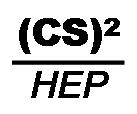Speaker
Filippo Maria Tilaro
(CERN)
Description
IEC 61850, as part of the International Electro-technical Commission's (IEC) Technical Committee 57 (TC57), defines an international and standardized methodology to design electric power automation substations. It specifies a common way of communicating and integrating heterogeneous systems based on multivendor intelligent electronic devices (IEDs); these devices play a fundamental role in the control architecture of these electric power systems. IEDs are connected to Ethernet network and according to IEC 61850 their abstract data models have been mapped to the following communication protocols: MMS (Manufacturing Message Specification), GOOSE (Generic Object-Oriented Substation Event), SV (Sampled Values), and possible in the future Web Services. All of these protocols can run over TCP/IP networks, so they can be easily deployed and integrated with Enterprise Resource Planning (ERP) network; if this continuous integration on one hand provides economical and functional benefits for the companies, on the other hand it exposes the industrial infrastructure to the external existing cyber-attacks; so it is necessary to face with the changing threats and vulnerabilities of the entire cyber world. Within the Openlab collaboration between CERN and Siemens, a test-bench has been developed specifically to evaluate the robustness of industrial equipment (TRoIE). This paper describes the design and the implementation of the testing framework and in particular of that part used to evaluate the robustness of the IEC 61850 previously mentioned protocols implementations.
Primary author
Filippo Maria Tilaro
(CERN)
Co-authors
Brice Copy
(CERN)
Manuel Gonzalez Berges
(CERN)
